Health concerns are paramount at this point, with the positive coronavirus tests of players and staffers around Major League Baseball, specifically the outbreak within the Miami Marlins camp and the heightened caution around the Philadelphia Phillies and St. Louis Cardinals, at the forefront of our minds.
Once we take a step into the slightly more frivolous news and developments of the early season, there are some interesting performances, improvements, roster moves and big-picture strategic concerns across the league to recap. It might not surprise you that I wrote much more than expected on these topics. Here are my top-line takeaways from the first week of games -- focusing on each team in the American League. Stats are through Thursday's games.
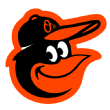
The Orioles took two of three from the Red Sox and are doing it with a motley crew of castoffs -- frankly, exactly how a rebuilding team should be constructed. One of the biggest advantages clubs have in this position is playing time and roster spots to give chances to fringe big leaguers, waiver claims, guys on minor league deals, those that have been injury prone, or haven't been performing well of late but with a glimmer of hope of regaining form.
Jose Iglesias is the definition of this -- a glove-first shortstop who probably can't start for a contender, and he's batting third for the Orioles, hitting .500/.500/.750 through four games. It's safe to bet against anything close to that continuing for long, but that's the fun part of a shorter season. Among the rest of the regular lineup, outfielder Anthony Santander was a Rule 5 pick and there are four waiver claims: third baseman Rio Ruiz, second baseman Hanser Alberto, designated hitter Renato Nunez and catcher Pedro Severino. First baseman Chris Davis has perhaps the worst contract in professional sports and there are two more waiver claims on the bench in utilitymen Pat Valaika and Andrew Velazquez.
Iglesias (seven balls hit 95-plus mph on 13 balls in play), Alberto (1.055 OPS), Ruiz (three homers), and Santander (a 401-foot homer, and another ball hit 107 mph) all had a strong opening series and having that occur at the beginning of the season allows for a breath of fresh air for Orioles fans rather than it getting buried in the middle of a slog. At least one of these players mentioned will turn into a multiyear, useful asset for the club that a contending team might even trade for, but those contenders don't have the bandwidth to discover on their own.
The pitching staff includes the two softest-tossing starters in the game (LHP Wade LeBlanc, 86.7 mph on average; LHP Tommy Milone, 86.3 mph) and the 11th-ranked average velocity in baseball thus far (RHP Miguel Castro 97.7 mph), but that's how the scrap heap works. The next wave of young talent (catcher Adley Rutschman, right-hander Grayson Rodriguez, left-hander D.L. Hall, left fielder Ryan Mountcastle) are all at the alternate site and could be ready as early as 2021.
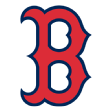
While fans were harsh after an early four-game slide, including dropping a series at Baltimore, declaring that the Red Sox are in a rebuilding year, their FanGraphs playoff odds have them (57%) as more likely to make the expanded playoffs than not. Functionally, the Red Sox will be doing some things like the Orioles, in that they're going to evaluate the new and fringe pieces to see who sticks around next year, while probably holding back their top prospects who have no MLB time as this happens. Boston just has a bunch of top-shelf talent (Rafael Devers, Xander Bogaerts, J.D. Martinez, Andrew Benintendi) around while this is happening.
Some of the weaker areas of the big league roster have top prospects lurking, so costly upgrades aren't realistic in the short term. A Mitch Moreland/Michael Chavis platoon at first base isn't ideal, but second-best prospect Triston Casas could be ready in late 2021 if fall/winter reps and a real spring next year (Casas isn't at the alternate site) can be achieved. Third baseman Bobby Dalbec will be big league ready next year (if not this year) and he fits at all four corner spots. Second base is a weakness, with Jose Peraza manning it this year, but top prospect (and Mookie Betts return) Jeter Downs should be ready in 2021. Center fielder Jackie Bradley Jr. is set to become a free agent after the year. If Chaim Bloom were running the Rays, letting the 30-year-old walk would be an easy call, but with more resources, a possibly depressed free-agent market, and prospect center fielder Jarren Duran not quite a sure thing, Bradley returning or another veteran replacement could be in the cards.
The rotation is extremely weak this year, but left-hander Chris Sale will be back next year from Tommy John surgery, it's hoped left-hander Eduardo Rodriguez will recover to his prior form for 2021, and prospect arms Bryan Mata and Tanner Houck, both right-handers, will be available. That's not enough to ensure a playoff-level pitching staff, but it makes the need more targeted than panic-inducing.
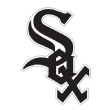
It has been a rocky 2-4 start for the White Sox, and their playoff odds (52%) almost match the Red Sox (48%), but the posture here is different. There aren't any major injuries/illnesses and the key young players in the organization are largely in the big leagues already. For this reason, the upper minor league-type prospect talent (lefty Garrett Crochet, righty Dane Dunning) are all potential reinforcements for under-performance or injuries later. Second baseman Nick Madrigal was in that last sentence until he was called up Friday. Sleeper prospect Codi Heuer, a right-hander, broke with the club and is sitting 96-98 mph in the bullpen with strong results, and center fielder Luis Robert has been as exciting as advertised, including balls hit 115.8 mph and 111.4 mph in the opening series against Minnesota. If we have a full season, the White Sox's and Padres' runs to finally reach the playoffs with young, exciting clubs will be among the best to watch.
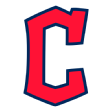
I'm fascinated by right-hander James Karinchak and wanted to write about him here, but after two outings this year, his stuff by any measure isn't as crisp, though still nasty. Hopefully, he'll settle in and allow me to bask in his greatness in a few weeks, but it's worth monitoring if he doesn't improve.
After a very up-and-down 2019 (.652 OPS in the first half, 1.105 OPS in the second half), third baseman Jose Ramirez is back on track out of the gates this season. He's hitting .440/.533/.760 through seven games with strong underlying StatCast metrics in terms of expected performance, and spikes in hard-hit rate (balls hit 95-plus mph off the bat) and sweet-spot rate (balls hit at ideal launch angles). With an MVP contender-level 8.0 fWAR performance in 2018 followed by a disastrous start to 2019, Ramirez has clarified his true talent level. Since July 1 of last year (232 PA), Ramirez has the third-best wRC+ (park- and league-adjusted offensive output) in baseball at 180 (80% better than league average), behind Nelson Cruz and Alex Bregman, edging Mike Trout.
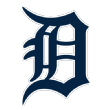
Through Wednesday's games, Tigers hitters had the most homers in baseball and also held the outright lead for most strikeouts. Most of the lineup has elevated strikeout rates and, looking at team-wide stats, this is driven mostly by a league-worst O-Contact%, or rate of contact on pitches swung at outside of the strike zone. This subset of contact informs the top-line numbers, where Detroit is also last in the league: swinging strike rate, or most whiffs per pitch thrown. We aren't at the sample size where this means anything definitive yet, but it's an interesting start for a rebuilding club with a lineup that's mostly short-term options, at most one or two who will be on the next Tigers playoff team.
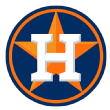
Shortstop Carlos Correa and outfielder Michael Brantley are both top 10 in WAR in the early going, posting 0.5 wins above replacement each through six games. What I'm keeping an eye on is how things will proceed after this season with new GM James Click in place. The club posted a number of scouting jobs online that will eventually be filled when we have more certainty around operations, indicating a move toward the approach of Click's past employer (the Rays) in running a team, and away from that of much-maligned-but-successful-until-fired-unceremoniously former GM Jeff Luhnow.
The 2020 payroll (before adjusting for pro rata) was more than $200 million, a number that might not be sustainable long term for Houston, and appeared to be pushing what they could justify pre-pandemic. It will be eased with some players hitting free agency after this season, with more than $58 million in salary leaving the books in the form of Brantley, outfielders George Springer and Josh Reddick, and first baseman Yuli Gurriel. After 2021, another nearly $100 million in yearly payroll (post-2020 arbitration awards aren't set yet) is set to hit the market in the form of Correa and right-handers Lance McCullers Jr., Roberto Osuna, Justin Verlander and Zack Greinke. With the pandemic and the potential end of a championship run, you'd think the payroll would shrink, putting lots of pressure on the farm system and Click to find cheaper replacements and stay competitive.
Lastly, the Astros players should be counting their blessings instead of getting indignant about Joe Kelly's head-hunting. Kelly shouldn't have gone that far, end of story. None of the Astros players were suspended, none of them lost their 2017 World Series rings or the championship itself, none of them had current or past contracts docked for misrepresenting their talent via cheating, none of them have to face crowds in 2020, none of them are facing the kind of media scrutiny as there would be without a pandemic as the top story or with reporters in their clubhouse daily. Yet McCullers wants to call Kelly "unprofessional" and assume the high ground to point out that Kelly was out of bounds with his behavior and that he wasn't on the specific Dodgers team the Astros cheated to beat -- as if that should even matter. Meanwhile, the price players such as McCullers have paid for cheating to win a World Series are some mean tweets and critical stories for a couple months.
Before the pandemic, I pointed out that a slow start would exacerbate all of these potential issues and lo and behold, Alex Bregman (4-for-23), Springer (1-for-21) and Jose Altuve (4-for-23) are all off to horrific starts and they have no crowds or in-person media to answer to, granted that it's a small sample size. Count your blessings and be quiet in the hopes that this blows over, because it probably will. You all were, and are, very fortunate.
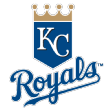
Through Tuesday's games, right fielder Jorge Soler had put nine balls in play and eight of them were hit 100-plus mph. He also has struck out in 38% of his plate appearances, so if you like the three true outcomes and excitement, Soler is your guy. If you strip out walks (3), hit by pitch (1), strikeouts (8), and the 100-plus mph rockets (8), that gets you to 20 and Soler has had 21 plate appearances -- only one of those 21 wasn't a strikeout, walk, hit by pitch or rocket.
Right-hander Brady Singer was a slight surprise to break camp with the club, but the organization has always been high on him due to his competitiveness and feel to pitch. He has improved his stuff a bit since college (velocity is up a bit, changeup has improved) and appears to have moved his arm slot up a bit, all positive developments. He still doesn't use his changeup much, as in college, but it has flashed above average at times. His slider location and consistent quality was better in his big league debut than I had seen from him in college. He still looks like a steady innings eater to me, but there's now a bit more oomph to the stuff, so he can be more of a mid-rotation type than a league-average type.
The Royals are also tied with the Pirates for most pitchers used (18). Those are two clubs predicted to be near the bottom of the standings, but we also see a number of contending-type clubs with deep pitching staffs also at the top of this count: Astros (17), Dodgers (16), Rays (16).
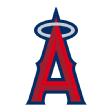
The Angels are at a crossroads, with GM Billy Eppler in the final year of his deal and a 45% chance of qualifying for the expanded playoffs. With Mike Trout, Anthony Rendon and Shohei Ohtani, the top-tier talent for a contender is in place, and with Albert Pujols, Andrelton Simmons and Justin Upton, the pre-pro rata cost for all six is about $130 million, leaving about $50 million for the rest of the club. The good news is the (league-minimum salaried) youngsters are showing up, with potential stars in outfielders Jo Adell and Brandon Marsh both on the verge of the big leagues, youngish, solid contributors such as shortstop David Fletcher and right-hander Griffin Canning already in the big leagues and 2020 top pick Reid Detmers, a lefty, on the fast track.
The bad news is that still might not be enough. They were already near their payroll ceiling, it might need to come down a good bit and only $34 million is coming off the books this year, including Simmons. It'll be a tricky tightrope act to overtake the Astros and/or A's, but sneaking into a wild-card spot could be enough for Eppler to get another year, add Adell, Marsh, and Detmers, and hope to put together a true title contender. I'm not going to spend any time on Ohtani's first outing because I'd like to pretend it didn't happen.

For as much as the Twins have committed to power bats and progressive ideas in building their contending club, they haven't bought in as much when it comes to pitcher velocity. The Twins were last in baseball a few days ago and now stand 28th, with an average fastball velocity of 92.1 mph. There isn't a big arm missing from the roster to explain this (Jake Odorizzi with his 92.9 mph heater from 2019 is on the IL, right-hander Michael Pineda, at 92.6, is suspended for a diuretic). Rather, the club appears to have just skewed toward other characteristics. Trading fireballing rightyBrusdar Graterol (99.2 mph) and getting right-hander Kenta Maeda (92.6 mph) in the Mookie Betts deal didn't help either. Right-hander Fernando Romero (97.0 mph) has been a replacement-level reliever thus far and is on the restricted list with visa issues.
Right-hander Jose Berrios (trending up to a career-high 94.6 mph from his season debut) is the only starter with above-average velocity, but the choices in the bullpen help pull down the average: righty Sergio Romo (85.8 mph) is a noted slider-heavy sidearmer, lefty Devin Smeltzer (86.8 mph) is a low-slot matchup lefty, lefty Rich Hill (88.2 mph) is a multiple-slot veteran with a knockout curveball and righty Tyler Clippard (88.8 mph) is a splitter/changeup-heavy reliever with a high arm slot.

Seems as if everyone saw Giancarlo Stanton's 459-foot bomb on opening night against Max Scherzer, but might not have seen his 483-foot, 121 mph exit velo missile two nights later against Erick Fedde. He's now fourth in baseball behind Dodgers shortstop Corey Seager, the MLB leader in Statcast's xwOBA figure, which aims to measure offensive performance by stripping out luck via grading contact on its characteristics rather than outcomes.
The extreme depth the Yankees have stockpiled came in handy last year and it's happening again this year with Luis Severino, Masahiro Tanaka and Aroldis Chapman all key pieces that aren't available though Tanaka is set to return tonight and Chapman might return soon). Beyond the current big league group, right-handers Clarke Schmidt and Deivi Garcia, and outfielder Clint Frazier are all at the alternate site and could provide key help down the stretch.
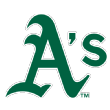
The A's have a bottom-five payroll but FanGraphs pegged them with an 83% chance to make the expanded playoffs entering Thursday's games. It's an achievement to be sure, doable only because Khris Davis is the only significant bad contract (two years, $33.5 million left pre-pro rata), but after this season shortstop Marcus Semien (their second-best player by WAR behind third baseman Matt Chapman) will hit free agency and almost surely be out of their price range. Chapman and Olson both seem like strong candidates for extensions as they approach arbitration.
Lefties Jesus Luzardo, A.J. Puk, Sean Manaea and righty Frankie Montas look like the makings of their next playoff rotation, so the challenge for 2021 is if the key pieces can stay healthy and Oakland can find a way to add more cheap help for the lineup. Montas is the key guy to watch this season because before his PED suspension last year, he looked as if he had finally turned the corner into becoming a frontline starter. If he can pick up where he left off, the work for Billy Beane and David Forst gets a bit easier.
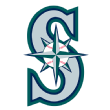
Read this one after you read the Rangers entry. OK, with that context, the Mariners did what the Rangers should've done when it was clear they weren't barreling toward having a contending club: a power rebuild! It takes buy-in from ownership to go along with this, it's not fun for most fans to watch, and the Mariners will be one of the worst teams in the league this year after being one of the worst teams in the league last year. That being said, 2021 looms as the year when it could turn northward.
Outfielder Kyle Lewis (a 438-foot homer, 1.115 OPS through seven games, third-highest WAR in baseball) has fully recovered from a torn ACL in 2016, shortstop J.P. Crawford has posted the fourth-highest WAR in baseball, and first baseman Evan White is showing promise after signing a team-friendly extension before playing a big league game, while top prospects in outfielders Jarred Kelenic and Julio Rodriguez are lurking maybe a year away, along with top 2020 draftee Emerson Hancock, top 2019 draftee George Kirby and top 2018 draftee Logan Gilbert, all right-hander pitchers.
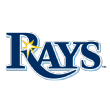
The Rays are a trendy pick to win it all and are off to a solid start with the second-best run differential in the American League. The Rays lean on velocity more than the average club, with four arms (righties Tyler Glasnow, Peter Fairbanks, Diego Castillo, and lefty Jose Alvarado) in the top 50 of average velocity in the league (all above 96.0 mph).
At the top of that list is Glasnow (pause for Pirates fans to gather themselves), who was fantastic in his season debut, striking out nine in four innings. His velocity has steadily improved every year since 2016: 93.5, 94.6, 96.6, 97.0, and 97.6 this season. It might be time for Glasnow to announce himself as a true ace this season. With Blake Snell atop the rotation, a shutdown bullpen and a deep lineup, Glasnow taking a step forward could be one of the final pieces to a championship club.
Most pitchers see their velocity increase throughout the year as they get stretched out and the weather gets warmer, but it's unclear exactly how much of that effect might exist this season. It'll likely be a case-by-case basis. On the flip side from Glasnow, Father Time might have caught up with Charlie Morton, with his velo decline from 2018 to 2020: 95.7, 94.4, 92.1. Ryan Yarbrough is a touch-and-feel type, but his margin for error is also steadily wearing off: 89.4, 88.2, 87.6. One pitch to make a point of seeing this year from one of the softer-tossers on this staff: righty Trevor Richards' screw-action changeup that's at least a 70-grade pitch on the 20-80 scale.
One last oddity to discuss: first baseman/DH Ji-Man Choi has batted right-handed in the big leagues for four at-bats and they've all been this season. He's a platoon type, so this could help keep him from getting lifted when the first lefty reliever comes in. He hit a homer at 109.9 mph in one of those four at-bats, if you ever thought you may be able to casually start switch-hitting at a professional level.
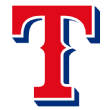
Outfielder Joey Gallo continues to demolish baseballs, with a 437-foot homer in the early going and gaudy exit velo figures as well. That's the same old story, but the recent competitive malaise around the club is also the same. Taking this 30,000-foot view of the league usually makes it easy to put clubs in buckets in terms of the amount and type of talent they have, in combination with the payroll and the age of their best players. A posture becomes clear when you look at these things alongside the playoff odds and projections for this season.
The Rangers don't have a great big league club right now, with a 29% chance to make the expanded playoffs this year and only the rebuilding Mariners behind them in the AL West. Gallo is a shining beacon of hope as a young standout contributor who is a core piece. Beyond that, the rest of the big league team is just stopgap veterans or young players who don't project as more than average everyday players. Lefty Kolby Allard (Braves) and outfielder Nick Solak (Rays) were second-tier types poached while buried in better farm systems, but are the next most exciting young players. They had the 25th-ranked farm system entering the year and added just one notable prospect in this summer's draft (second baseman Justin Foscue) but another with a solid-not-spectacular upside. The alternate site has some solid prospects that might be role-5 (league average) type talents as well, but nothing inspiring.
There's depth to the farm system, but a historic run of arm surgeries to pitching prospects dampened the potential impact. There have been moves behind the scenes to modernize some of their processes, but there hasn't been much fruit to speak of. There's some payroll upside with a major media market and new stadium, but buzz continues that the club is in bad financial shape due to the debt tied to the stadium, combined with the pandemic. The Rangers have committed $54.75 million (pre-proration) in 2020 to 31-year-old shortstop Elvis Andrus, 34-year-old righty Corey Kluber (on the injured list), and 38-year-old outfielder Shin-Soo Choo, roughly a third of the overall payroll.
If all GM jobs were vacant and you ranked them by attractiveness as a job, considering talent, payroll, ownership and other key factors, Texas' wouldn't be the bottom of the list but would certainly be in the bottom five. All of the small-market clubs that are seen as challenging gigs have a clear direction (the Rays/A's/Brewers process themselves into yearly contenders, the Orioles/Pirates/Marlins are rebuilding after regime changes), so it raises the question of what the direction is in Arlington.
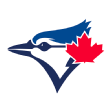
Right-hander Nate Pearson, sixth overall in my preseason top 100, made his debut Wednesday night against Max Scherzer. After the Jays cynically left him at the alternate site for a week to gain another year of team control, Pearson looks here to stay. There were still some growing pains to work out, like when Pearson would overthrow a ball after throwing a picture-perfect strike he wanted to best, but he settled in as he went and made adjustments.
His slider was consistently plus and flashed that 65-or-70-grade putaway pitch he'd flash in the minors. His fastball was mostly 94-98 mph, but we know there's even more in the tank if needed, though Pearson mostly held back in terms of maximum effort to try to save some bullets for later in his outing. He didn't use his curveball or changeup much but this was also in a 75-pitch debut without much advance scouting available to the Nats. Look for less than 93% usage of his fastball/slider combo in future outings. The optimistic upside of something like Noah Syndergaard seems pretty reasonable after an MLB debut like that.
It was somewhat expected that first baseman Vladimir Guerrero Jr. might break out in 2020, and he's off to a fast start (11 of 18 balls in play hit 95-plus mph off the bat, nearly twice his rate of 2019) while outfielder Teoscar Hernandez's hot start (14 of 20 balls in play have been 95-plus mph, three have been 110-plus mph off the bat, an 1.176 OPS that StatCast says has no luck in it) might be a bit more surprising to a casual fan. The Jays are in the deepest division in baseball, but still have a 33% chance to make it into the expanded playoff format, so a couple unexpected breakthroughs could go a long way toward that playoff push.
